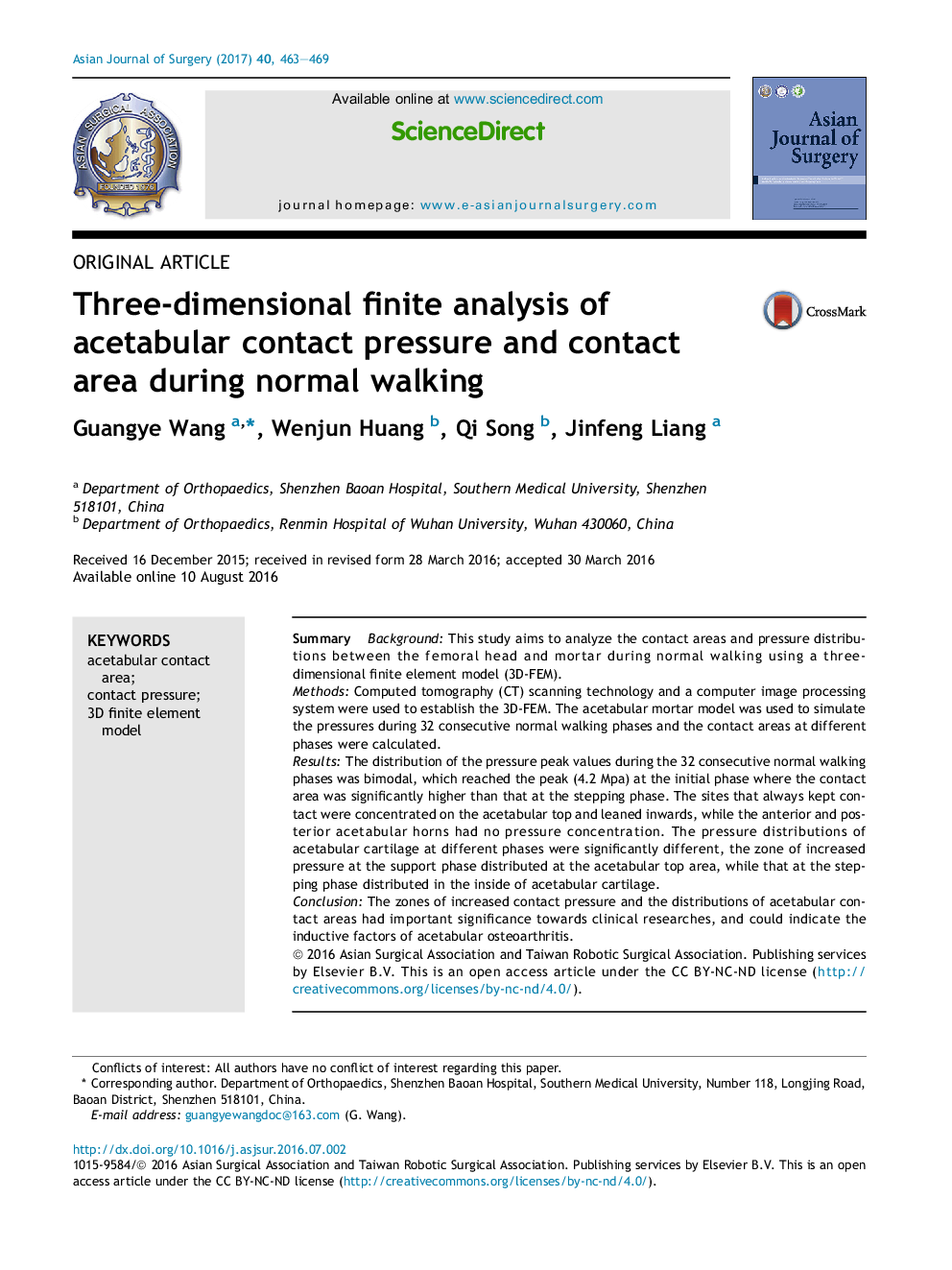| Article ID | Journal | Published Year | Pages | File Type |
|---|---|---|---|---|
| 5731465 | Asian Journal of Surgery | 2017 | 7 Pages |
SummaryBackgroundThis study aims to analyze the contact areas and pressure distributions between the femoral head and mortar during normal walking using a three-dimensional finite element model (3D-FEM).MethodsComputed tomography (CT) scanning technology and a computer image processing system were used to establish the 3D-FEM. The acetabular mortar model was used to simulate the pressures during 32 consecutive normal walking phases and the contact areas at different phases were calculated.ResultsThe distribution of the pressure peak values during the 32 consecutive normal walking phases was bimodal, which reached the peak (4.2 Mpa) at the initial phase where the contact area was significantly higher than that at the stepping phase. The sites that always kept contact were concentrated on the acetabular top and leaned inwards, while the anterior and posterior acetabular horns had no pressure concentration. The pressure distributions of acetabular cartilage at different phases were significantly different, the zone of increased pressure at the support phase distributed at the acetabular top area, while that at the stepping phase distributed in the inside of acetabular cartilage.ConclusionThe zones of increased contact pressure and the distributions of acetabular contact areas had important significance towards clinical researches, and could indicate the inductive factors of acetabular osteoarthritis.
